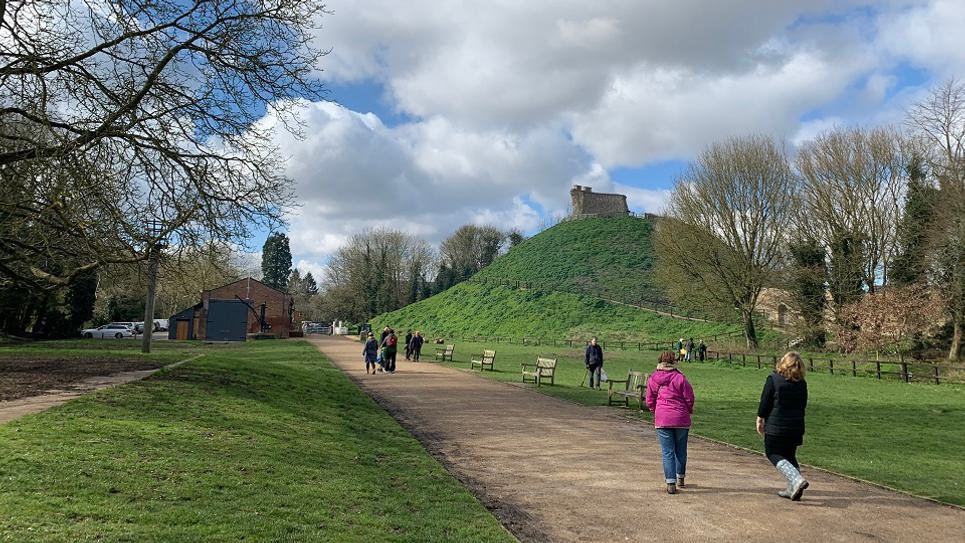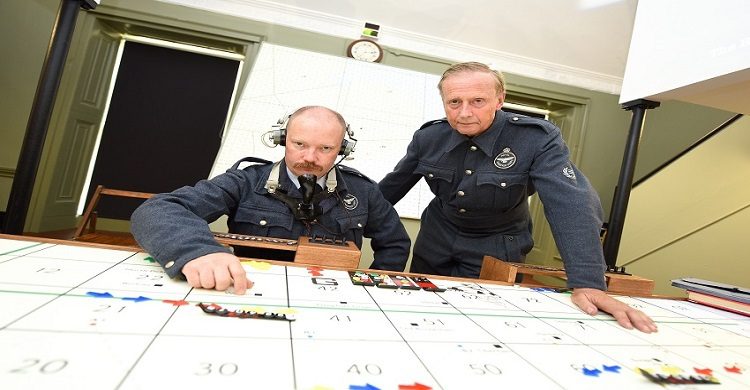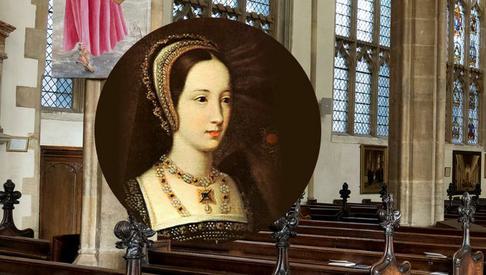
Back to Blogs
Discover
Who was Elizabeth de Clare?
Marking the anniversary of her birthday on 16th September, discover who Elizabeth de Clare was; how she was connected with Clare in Suffolk and where you can find out more today!
Who was Elizabeth de Clare?

Elizabeth de Clare was born on the 16th September 1295, the granddaughter of King Edward I. The 11th Lady of Clare, she was the heiress to the lordships of Clare in England and Usk in Wales.
She was the youngest of the three daughters of Gilbert de Clare, 6th Earl of Hertford and Joan of Acre, and sister of Gilbert de Clare. Her father had been one of England's wealthiest and most powerful nobles, and her mother was the daughter of King Edward I of England. When Elizabeth's only brother Gilbert, 7th Earl of Hertford was killed at the Battle of Bannockburn in 1314 aged only 23 and leaving no surviving issue, his property, estimated to be worth £6,000 per year, was equally divided between his three full sisters, Elizabeth, Eleanor and Margaret, making Elizabeth one of the greatest heiresses in England. She acquired Clare Castle and the combined estates made her one of the wealthiest women in England. Elizabeth used the castle as her main residence between 1322 and 1360.
Married three times, she is often referred to as Elizabeth de Burgh, due to her first marriage to John de Burgh, the Earl of Ulster in 1308. Elizabeth gave birth to their only child, a son, in 1312 but only a year later, John was unexpectedly killed in a minor skirmish. in 1316, King Edward II recalled her to England so he could select a husband for her, leaving behind her young son, William.
Edward II placed her in Bristol Castle, but his plans to marry her to one of his supporters were dashed in February 1316, when Elizabeth was abducted from Bristol by Theobald II de Verdun, the former Justiciar of Ireland, but she was Lady Verdun for only six months as Theobald died on 27 July 1316. She fled and stayed under the protection of her aunt Mary de Burgh, who was a nun, and gave birth to a daughter, Isabel de Verdun on 21 March 1317.
Just a few weeks later after Isabel's birth, Edward II married Elizabeth to Sir Roger D'Amory, and gave birth to another daughter, Elizabeth, in May 1318.
How was she connected with Clare, Suffolk's smallest town?

After Damory's death, Elizabeth de Clare never remarried and styled herself the 'Lady of Clare' after her principal estate in Suffolk. She also had a residence at Anglesey Abbey, Cambridgeshire, Great Bardfield, Essex, and in 1352 she built a London house in the precinct of the Franciscan convent of Minoresses, Aldgate.
A good idea of her lifestyle in the last 25 years of her life can be taken from the extensive survival of her household and other records. These threw light on the activities of and provision of food and drink for the household (numbering up to 100 people) of one of the richest and most influential women of the fourteenth century.
Amongst the records are the work of her personal goldsmith in 1333, and she also lists her alms giving and the patronage towards her favourite religious houses, the priories at Clare, Anglesey, and Walsingham, and Denny Abbey. Elizabeth is best remembered for having used much of her fortune to fund Clare College, Cambridge, the second oldest of Cambridge’s 31 colleges.
Where can you find Elizabeth today?

Clare Ancient House Museum. Photo: Melanie Lesser
Elizabeth died on 4 November 1360 aged 65 and was buried at the Church of the Minoresses Without Aldgate in London.
Information on Elizabeth's life can be found at Clare's Ancient House Museum where you can see an enlarged drawing of her seal, whilst the actual seals are kept in the British Library.
Her mother, Joan of Acre, a daughter of King Edward I, is buried at Clare Priory. Historic Clare Priory, on the banks of the River Stour, dates back to 1248 was the first house of Augustinian Friars in England. The priory had close connections with medieval nobility and royalty and the ancestors and relatives of King Richard III are also buried here.
You can also visit Clare Castle Country Park where Elizabeth de Clare entertained her many noble guests during her residence between 1322 and 1360. The castle, first built in the 11th century by Richard FitzGilbert, a Norman knight who was rewarded by William the Conqueror with large estates in Suffolk, Essex and Kent, eventually passed into the hands of the Crown and by the 16th century was in ruins.
Today, Clare Castle Country Park is a beautiful quiet area to relax, play, get close to nature and learn about Clare’s fascinating history and heritage. The park contains the remains of the 13th Century stone castle keep set upon its 60ft high motte overlooking the town, as well as its inner and outer baileys which are ideal areas for recreation and picnics. The inner bailey also contains a former railway station which now houses the Platform One Cafe serving hot drinks and food throughout the year.
Away from the open green areas visitors can find the footpaths through the trees and along the banks of the River Stour and along the old railway line. Here can be viewed the variety of trees and plant life, and information boards show the various birds and water life which can be seen along the waters’ edge.
Suffolk's smallest town, Clare is set in the beautiful countryside of the Upper Stour Valley, and brimming with history and nature just waiting to be explored. It has over 130 listed buildings, a host of independent shops, cafes and pubs, a magnificent 'Wool Church' to explore, a museum housed in a Grade I listed building. All this plus the River Stour made famous by John Constable, a 36-acre Country Park with a Norman Castle and Victorian Railway Buildings, Clare Priory - the mother house of the Augustinian Friars in England and a 9-hole golf course and fishing ponds.
You can find out more about Clare on the Visit Clare website.
Related Posts
Related Blogs

News
Bury Tour Guides to launch…
Bury St Edmunds Tour Guides to Introduce new tours in…

News
Town’s Museum Forms New…
Moyse’s Hall Museum will be forging links with a…

News
St Edmundsbury Cathedral…
St Edmundsbury Cathedral in Bury St Edmunds is…

News
Bury St Edmunds & Beyond…
Step inside many of Bury St Edmunds historic buildings…

News
Bury's Best Pubs with a Past
some notable, historic and somewhat quirky pubs and…
Latest news

News
How to Spend Betwixtmas in Bury St Edmunds & Beyond
The post Christmas period is the perfect time to get out and about before the new year kicks in, and you’ll find plenty of activities and places to visit in Bury St Edmunds and beyond.

News
Parents Guide to Pre Christmas Entertainment
It's the school holidays and with Christmas just around the corner we've put toegther a guide on places to take the kids to keep them entertained until Santa visits!

News
Enjoy a Festive Afternoon Tea in 2025
Celebrate the Christmas season with a festive afternoon tea in Bury St Edmunds & Beyond...

News
Festive Winter Walks
Get outside and enjoy the fresh crisp winter air with one of these walks in Bury St Edmunds and Beyond!

News
Bury Tour Guides to launch new tours next year after successful 2025
Bury St Edmunds Tour Guides to Introduce new tours in 2026 and continue the successful Food and Drink Tours!

News
New in Bury St Edmunds For 2026
A sneak peak into new attractions visitors can enjoy in Bury St Edmunds in 2026.

News
Baby It's Cold Outside... Things To Do When the Weather Turns Frosty
Just because the temperature’s dropped doesn’t mean the fun has to! If you’re visiting town during the chillier months, there’s still plenty to see, do, and experience.

News
Places to sit by a roaring fire in Bury St Edmunds & Beyond
Warm up by a roaring fire this winter in Bury St Edmunds & Beyond...

News
Christmas Park and Walk 2025
Additional parking has been provided by West Suffolk Council in partnership with Greene King this Christmas.





